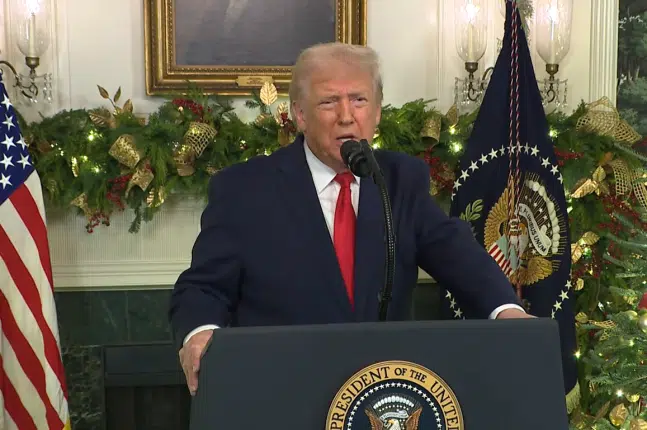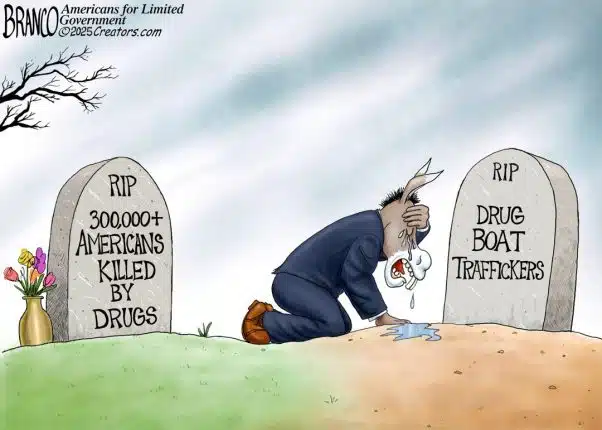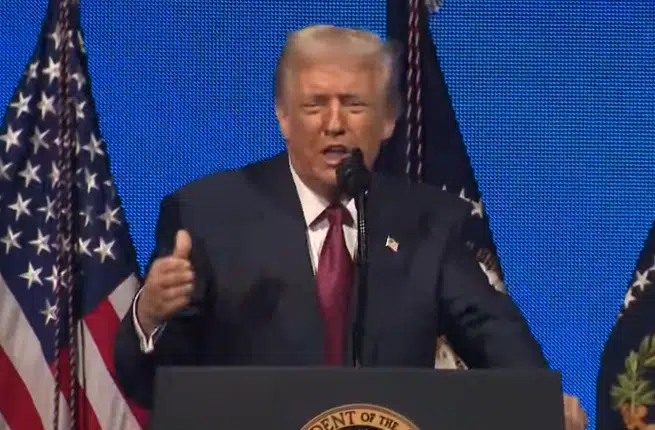
One of the most startling takeaways to the Washington, D.C. elite from the 2024 election was that young voters, particularly Gen Z, launched a revolt against the left-wing regime and moved significantly toward the right.
Revisiting the exit poll data, a consistent theme emerges that is backed by evidence elsewhere: young people helped President Donald Trump and conservatives gain ground in pivotal battleground states.
To build out a lasting coalition of middle-class voters and ensure these voters are not merely a flash-in-the-pan rebellion vote against the Biden Administration, conservatives need to continue to reach out to and engage with young people and minorities.
We’ve covered before how the Latino vote is extremely young compared to the white electorate, and also how both younger Latinos and Blacks show much less allegiance to the Democratic Party compared to older generations.
It’s not too surprising – the Democratic Party has promised prosperity for decades and failed utterly to deliver.
Young people have a less entrenched ideology around political allegiance and are more likely to approach politics as free agents, aligning behind the causes that they believe will benefit them. Right now, those causes are fixing the economy and solving the immigration crisis.
We’ve covered the significant shift of young voters toward the right over the past eight years, but revisiting 2024 exit polls and zeroing in on key swing states reveals the country’s youngest voters contributed the most toward backlash against Democrats.
One of the largest shifts among very young voters in the 18-24 range took place in the highly diverse state of Texas. Texas is nearly 40 percent Latino (39.8 percent) and 13.6 percent Black according to the latest U.S. Census numbers, and young people deserted Democrats in droves last November.
After supporting Biden by 20 points in 2020 – 58 percent to 38 percent – Gen Z supported Harris by a meager two points, 50 percent to 48 percent. Put another way, Harris’ margin over Trump shrank by eighteen points compared to Biden’s margin over Trump four years ago.
Another highly diverse swing state, Florida, saw Gen Z voters shifting substantially toward conservatives in 2024. Florida is 27.4 percent Latino and nearly seventeen percent Black, according to the Census, but Florida young people are rapidly moving toward the right.
After favoring Biden over Trump by 15 points in 2020 – 57 percent to 42 percent – Gen Z favored Harris over Trump by a meager four percentage points, 52 percent to 48 percent. Harris’ margin over Trump shrank by eleven points compared to Biden’s margin over Trump four years ago.
Texas and Florida have been trending conservative for years now, and Gen Z voters are significant contributing factors to that shift. However, even in more ‘purple’ states, Gen Z made massive strides away from Democrats in the last election.
Nevada is a strong ‘purple’ state, but it had been trending Democrat in recent years until 2024. Trump was the first Republican presidential candidate to win Nevada since George W. Bush did in 2004, buoyed by a significant bump in the youth vote.
Like Texas and Florida, Nevada is highly diverse, with nearly 30 percent of the state identifying as Latino, eleven percent as Black, and around 10 percent as Asian according to the Census.
In 2020, young voters formed Biden’s base support in Nevada, supporting the former president by thirty points, 63 percent to 33 percent. However, Nevada’s youngest voters were highly skeptical of Harris four years later and ended up supporting Harris over Trump by only thirteen points. This translates into Harris’ margin over Trump shrinking by seventeen points compared to Biden’s margin over Trump in 2020.
Diverse purple states proved to be the Democrats’ kryptonite in 2024, and they present opportunities for conservatives to build a long-lasting coalition with young and minority voters over the next several election cycles.
We have covered other research validating a strong shift among younger minorities away from Democrats. A 2024 survey from UnidosUS found that new Latino voters who were added to the voter pool after 2016 or 2020 – younger voters, largely – were much less likely to be Democrats than voters who had been in the voter pool for several election cycles.
The report found that almost 40 percent of the Latino electorate in 2024 were new voters compared to the 2016 election, and newer registered Latinos were much younger than the voter population as a whole, with a full 80 percent of newer Latino voters clocking in at age 39 or younger.
The report also noted that newer voters were fourteen points less likely to be Democrats compared to established voters. Just 45 percent of newer voters identified as Democrat, compared to 59 percent of more established voters. Newer voters were also much more likely to be independent (36 percent) compared to older voters (18 percent).
With regard to Black Americans, a 2023 survey from the American Enterprise Institute’s survey for American life found that then-President Biden’s approval rating among younger Blacks was significantly lower than it was among older Blacks. The survey also found that younger Blacks were less likely to identify as Democrats and less likely to say Democrats look out for the working-class compared to older Blacks.
While minorities played a role in Trump’s gains with Gen Z, young white voters also played a role. According to research from the Center for Information & Research on Civic Learning and Engagement (CIRCLE) at Tufts University, white young people voted for Trump over Harris by ten percentage points in 2024, 54 percent to 44 percent. This was the largest margin for Trump of any racial group. Young people regardless of race were particularly motivated by economic issues, and that was reflected in the shift toward Trump in swing states.
The explanation for these shifts is likely a combination of factors, but the conclusion is the same. Democrats in diverse purple states should be very worried, and Republicans should continue making inroads with young and minority voters in states like Nevada, Florida, and Texas. Conservatives may even consider building out efforts in blue states like New Mexico, Hawaii, and California.
Manzanita Miller is the senior political analyst at Americans for Limited Government Foundation.






